Animation &Animation Artifacts &Disney &Tytla 13 Jul 2011 06:50 am
Tytla’s Dwarf Fight – recap
As I noted last Saturday, I intend to repost a number of the Bill Tytla animated pieces I have in the history of this blog. His work, at least to me, is too important to let just sit there. This post was originally published on this blog in March 2009.
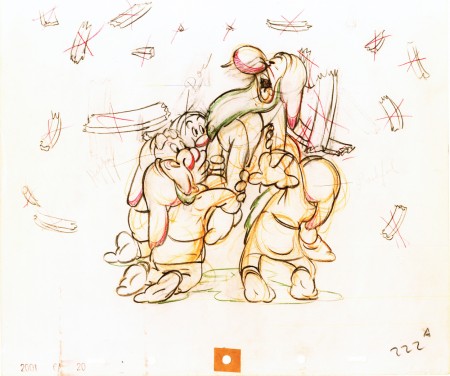
Here is a scene from Snow White, animated by Bill Tytla, in which four of the dwarfs fight Grumpy. The drawing above is the first of these drawings and it shows what it looked like in color – lots of red pencil notes, yellow pencil for rough structural lines. The rest of the drawings I have are B&W copies.
One of the things about Tytla’s work that I just love is the built in distortion he does to the characters. Check out Happy’s face (upper left) in drawing #227. Or Grumpy’s face in #260. They’re beautiful, and when the animation is moving, the distortion doesn’t show. He did as much with Stromboli. I’m convinced this is one of the ways he pulled the inner character out, trying to get Stanislavski’s theories into animation. It’s wonderful.
By the way, if you like this material check out Hans Perk ‘s site. Tytla talks about dealing with forces vs. forms in animation. This is what Tytla was all about in animating.
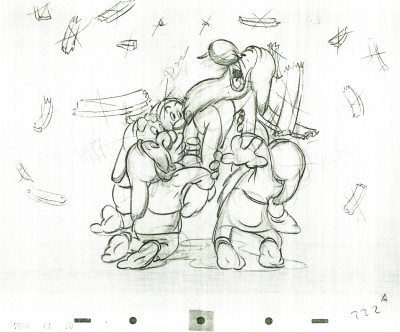 222
222(Click any image to enlarge.)
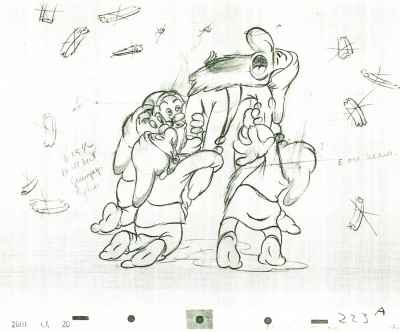 223
223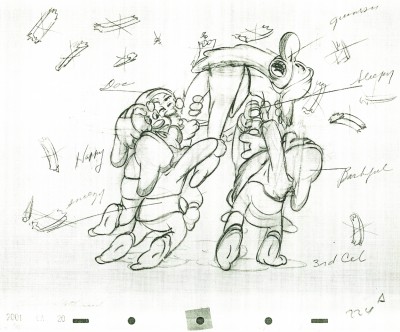 224
224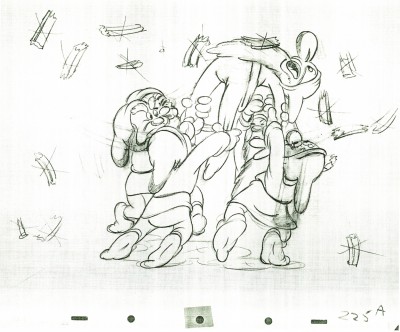 225
225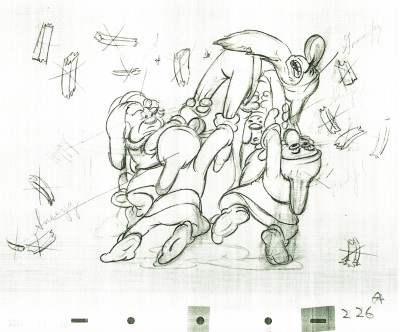 226
226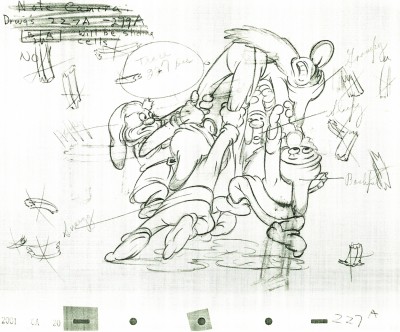 227
227Check out Happy’s face on this inbetween.
Then check out Tytla’s drawing (the next one) of Happy.
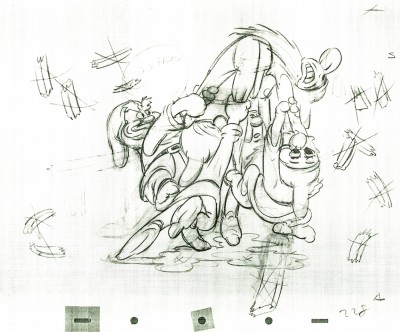 228
228
Tytla marked his own drawings with an “X” in the upper right corner.
The other drawings are the work of inbetweeners. The writing looks
to be all the work of Tytla.
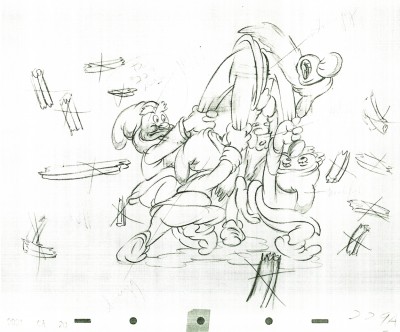 229
229
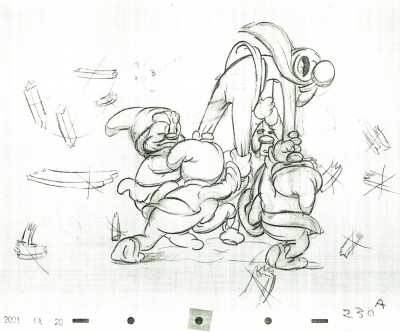 230
230
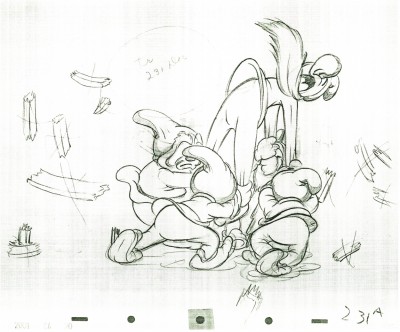 231
231
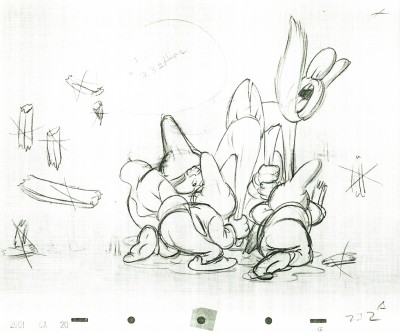 232
232
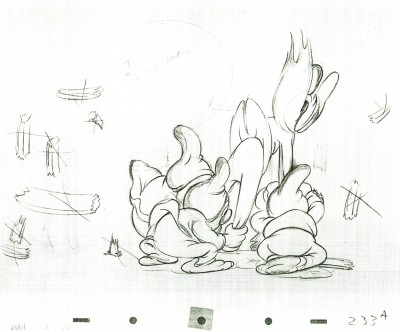 233
233
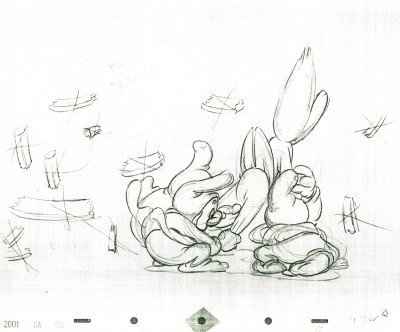 234
234
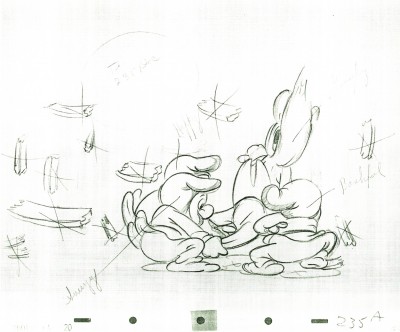 235
235
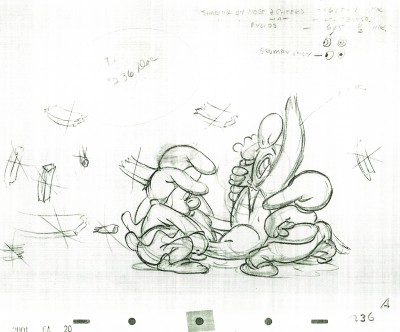 236
236
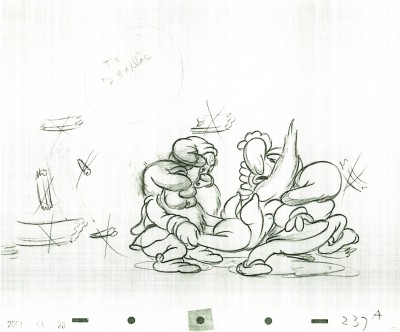 237
237
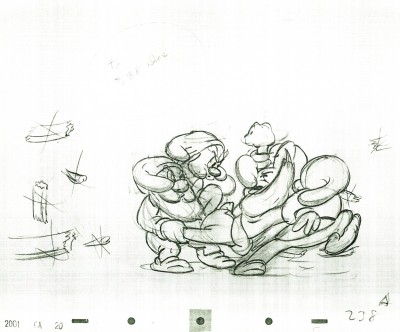 238
238
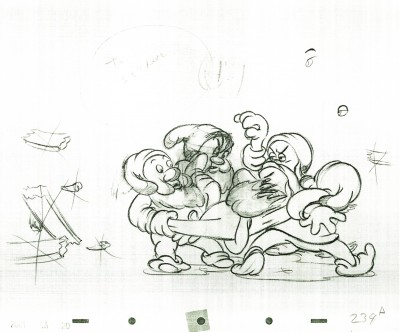 239
239
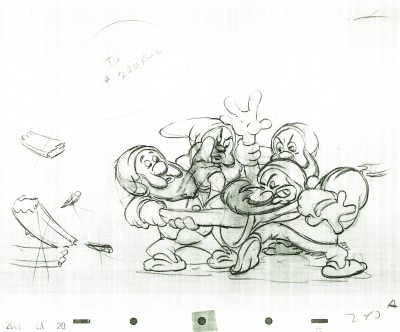 240
240
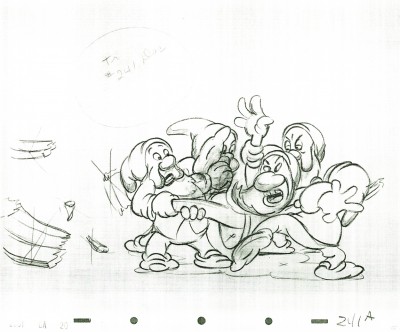 241
241
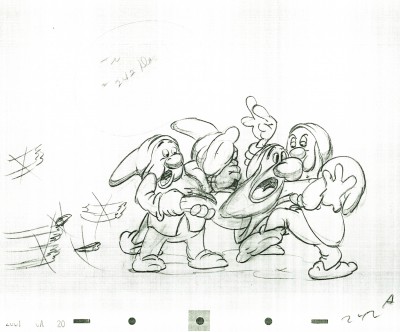 242
242
Some of these drawings are just hilarious in their own right.
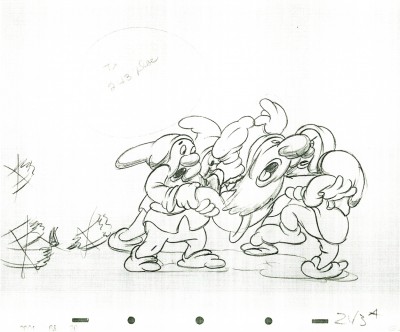 243
243
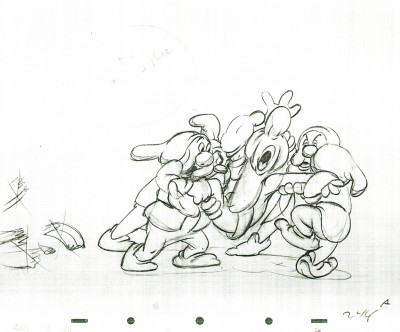 244
244
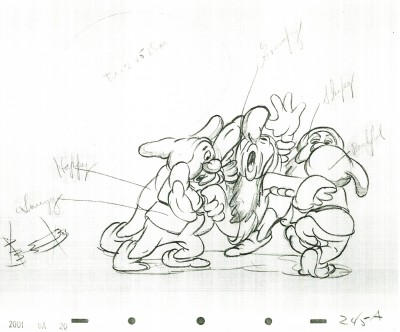 245
245
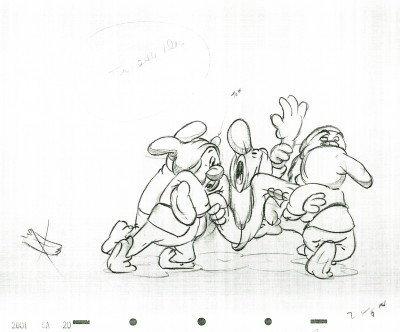 246
246
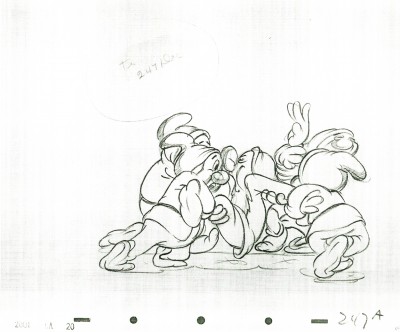 247
247
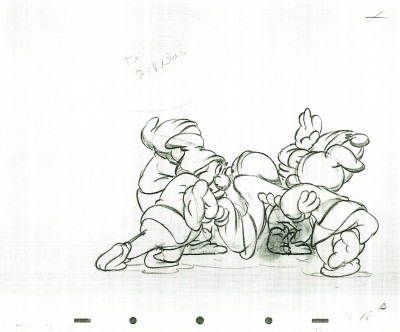 248
248
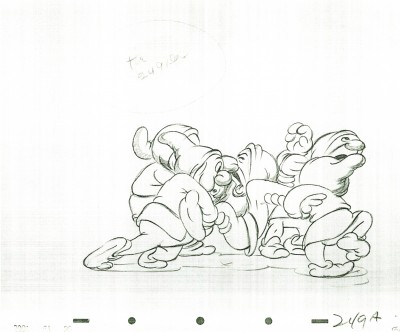 249
249
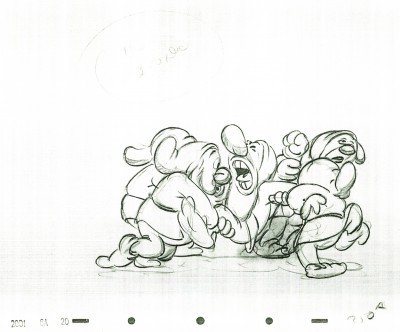 250
250
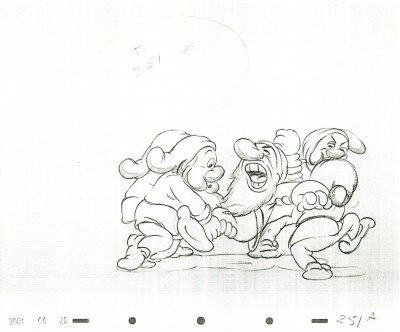 251
251
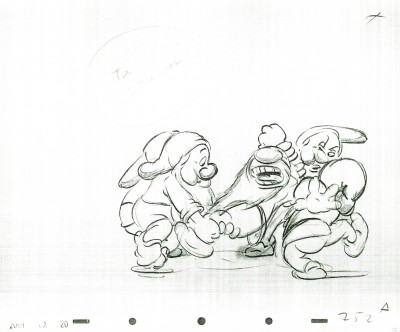 252
252
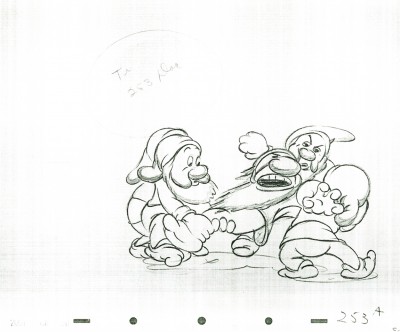 253
253
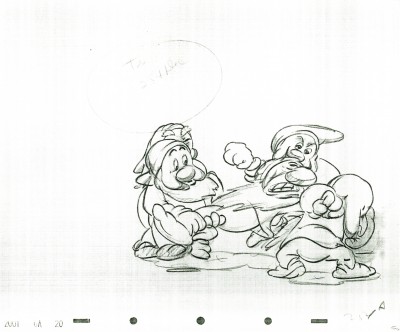 254
254
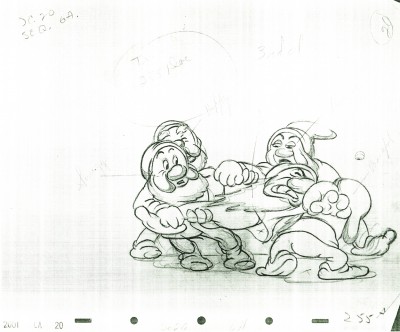 255
255
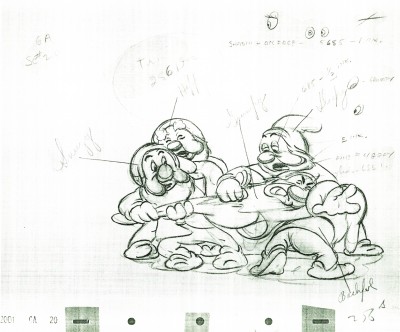 256
256
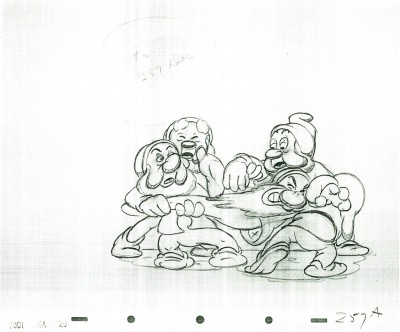 257
257
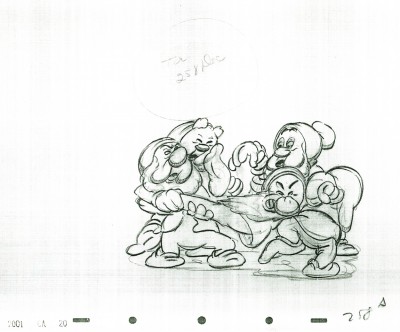 258
258
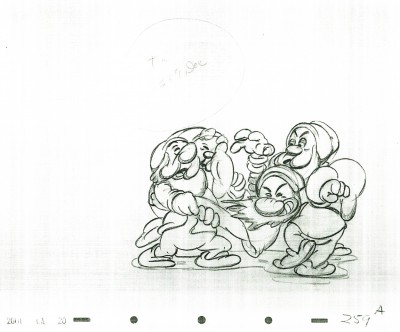 259
259
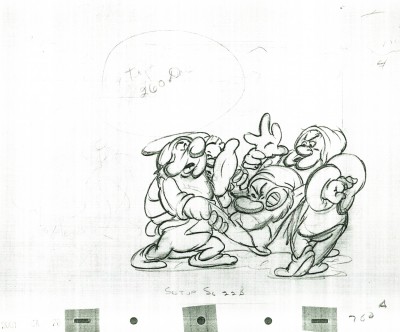 260
260

on 13 Jul 2011 at 8:39 am 1.John Celestri said …
What amazes me is how Tytla used caricatured movement to portray both motion and emotion with power and grace. In Tytla’s initial roughs/scribbles posted on Andreas Deja’s blog, you can see how Tytla was searching with his pencil to capture on paper the pure forces that would convey the character’s performance.
on 13 Jul 2011 at 8:46 am 2.Dave Levy said …
A dream book would cover all these formative Disney guys like Tytla, Moore, Babbitt, Ferguson, etc… There’s something kinetic in their animation that didn’t make the leap into those they trained to follow them.
on 14 Jul 2011 at 9:02 am 3.Peter Hale said …
Picking up on Dave’s comment, I think this is due to the switch from shorts to features. These guys had learned to animate on the shorts, where Disney was pushing for exaggeration and caricature of action.
When they came to the features they had to pull back on the extreme stretch and squash and increase the action time to give characters a more credible weight.
I think that, having learned to pull back on the bouncy, extreme stuff and adopt more realistic timing
they were only interested in passing on the subtler approach that they had learned over the period of feature work.
While they still had the underlying experience of extreme action informing their work, their proteges perhaps lack that earlier experience of pushing for very exaggerated action.
on 14 Jul 2011 at 9:17 am 4.Michael said …
Peter, in general I agree with your assessment. But I find Tytla a different case. It’s most obvious in his animation for Stromboli and some of the dwarf animation. I know for a fact that Tytla was interested in applying Stanislavsky techniques to his animation. I find that his inbetween work yields to exaggerated distortion just prior to goig into a strong, well drawn extreme. Like the later animation of Bobe Cannon, Tytla was forcing distortion inbetween the extremes. I believe he was using this as the actor would use sense memory to perform a piece. Tytla was using grapic distortion to rip apart and reconstruct his character’s extreme emotions. That’s my theory and I’m sticking to it.
on 14 Jul 2011 at 9:31 am 5.John Celestri said …
Adding to Dave’s and Peter’s comments, I offer the following as a possible scenario.
Tytla, Moore, Babbitt, and Ferguson were all self-taught artists with a smattering of art school training. They also had strong personalities. So, their styles all came from within.
If I’m not mistaken, I believe I read somewhere that Disney himself called for the pulling back from the more cartoony extreme action, starting with the Bambi tests (Kahl, Thomas, Johnson, all art school trained). Maybe it was his comment regarding those tests, “Boys that is pure gold,” that was taken by the younger artists as his direction to go subtler.
With that in mind, I think Disney was looking for the more subtle style of caricature…a more realistic effect, which would set his films apart from what the other studios’ style could present.
on 14 Jul 2011 at 9:40 am 6.Michael said …
The only problem is that Tytla, alone, went more extreme (until he did the Devil in Bald Mt.) than he had done in the shorts.
on 15 Jul 2011 at 1:50 pm 7.Steven Hartley said …
Good timing of Snow White posts – as I’m making mosaics (again) for the film.